If you miss being able to slice into a log of cheese and spread it on bread or crackers, this fermented cashew cheese will give you back that experience.
And if you’ve ever been disappointed by the vegan cheese options at the grocery store or don’t have access to them, this recipe will be a godsend.
First, a simple mixture of cashews, vinegar, lemon juice, coconut oil, nutritional yeast, and seasonings gets blended until smooth. Then, it ferments for a day or two. Finally, the cheese gets shaped into a log (think a log of goat cheese) and hangs out in the fridge for a few hours. Once sliced, it’s easy to slice and spread (and is SO very tasty).
Hungry for even more vegan cheese?
Check out my complete guide to vegan cheese! It covers the best vegan cheese recipes to use for every situation (like Vegan Feta and Vegan Queso) and reviews the best vegan cheeses you can buy at the supermarket.
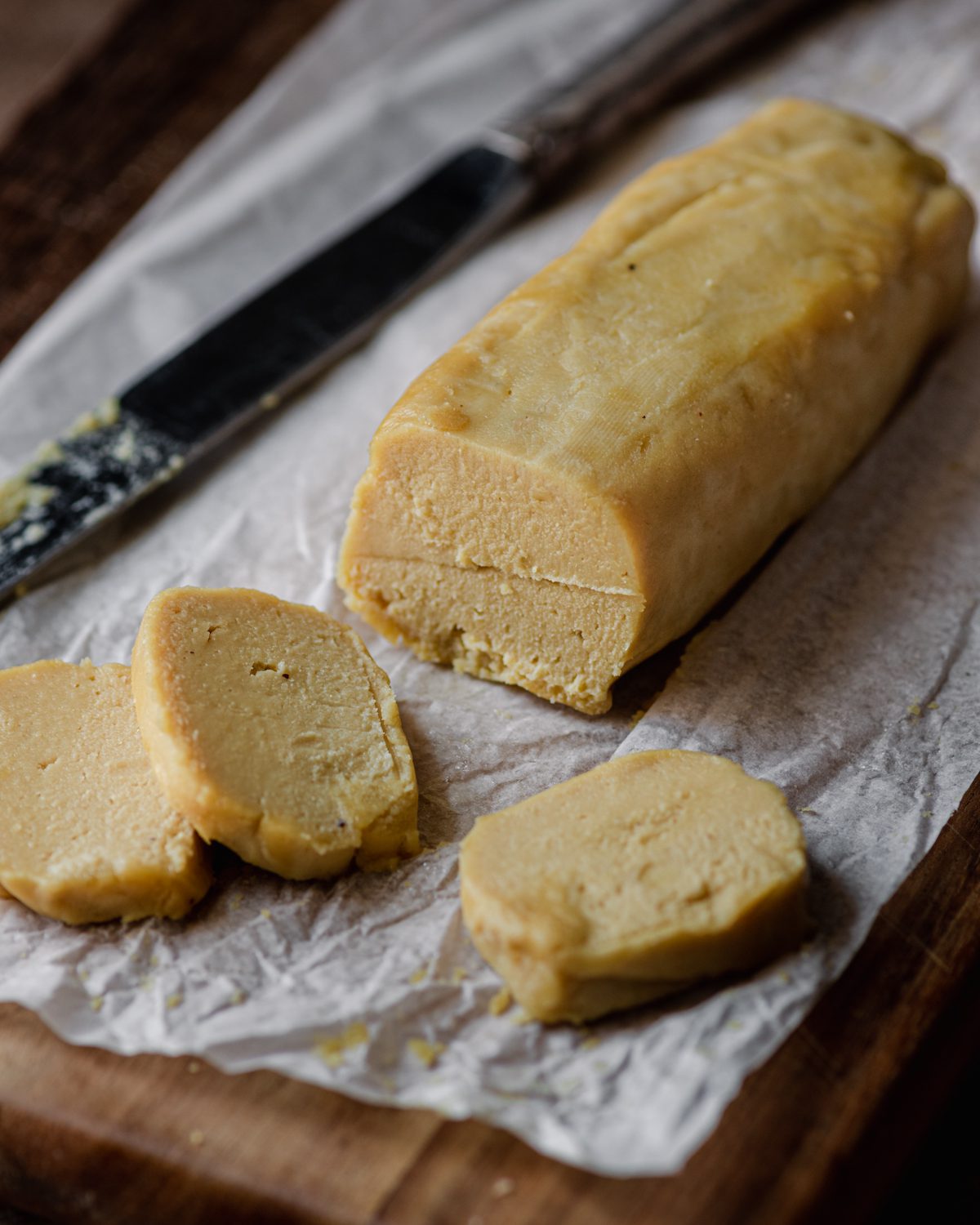
Why you’ll love this recipe
Sliceable and spreadable. Homemade vegan cheese recipes that are sliceable and/or spreadable are hard to come by, and if you don’t have access to vegan cheeses at your grocery store, this is an amazing option to keep in your fridge. The addition of coconut oil and very little liquid makes the cheese solid enough to hold its shape and to slice.
Easy and minimal ingredients. This recipe requires just 10 to 15 minutes of hands-on work and a bit of patience while the cheese ferments. And just 7 pantry-friendly ingredients!
Gourmet and flavorful. Despite being so easy to make, this cheese feels fancier than most homemade cheeses and is packed with flavor. In addition to having subtle cheesy vibes from nutritional yeast, it has so much more tanginess and umami than your standard vegan cheese thanks to fermentation.
Make ahead. Because this is a fermented cheese, it will continue to stay good in your fridge for several weeks… if you can resist eating it!
Wholesome but indulgent. Fermented cashew cheese has all the traditional dairy cheese flavors but it’s made with wholesome plant-based ingredients. Plus, the live bacteria created in the fermentation process are good for your gut!
If you’re interested in some of the crazy cool things cashews can do to recreate your favorite comfort foods, check out my crazy good Vegan Spinach Artichoke Dip or Vegan Moussaka!
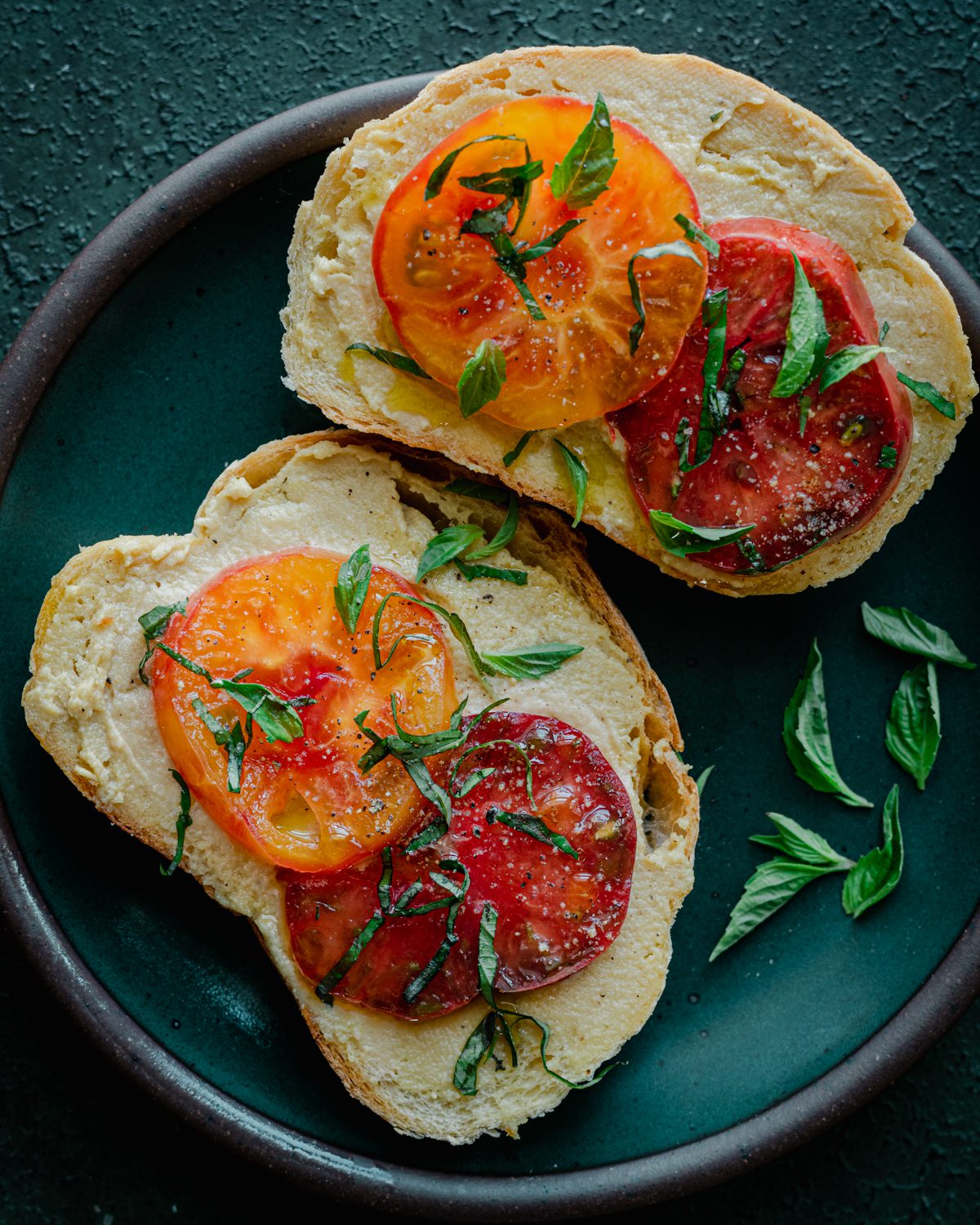
How to make this recipe
Add the soaked cashews, apple cider vinegar, lemon juice, and coconut oil to a high-powered blender. Blend on medium to high speed for several minutes, scraping down the sides of the blender several times as you go, until relatively smooth.
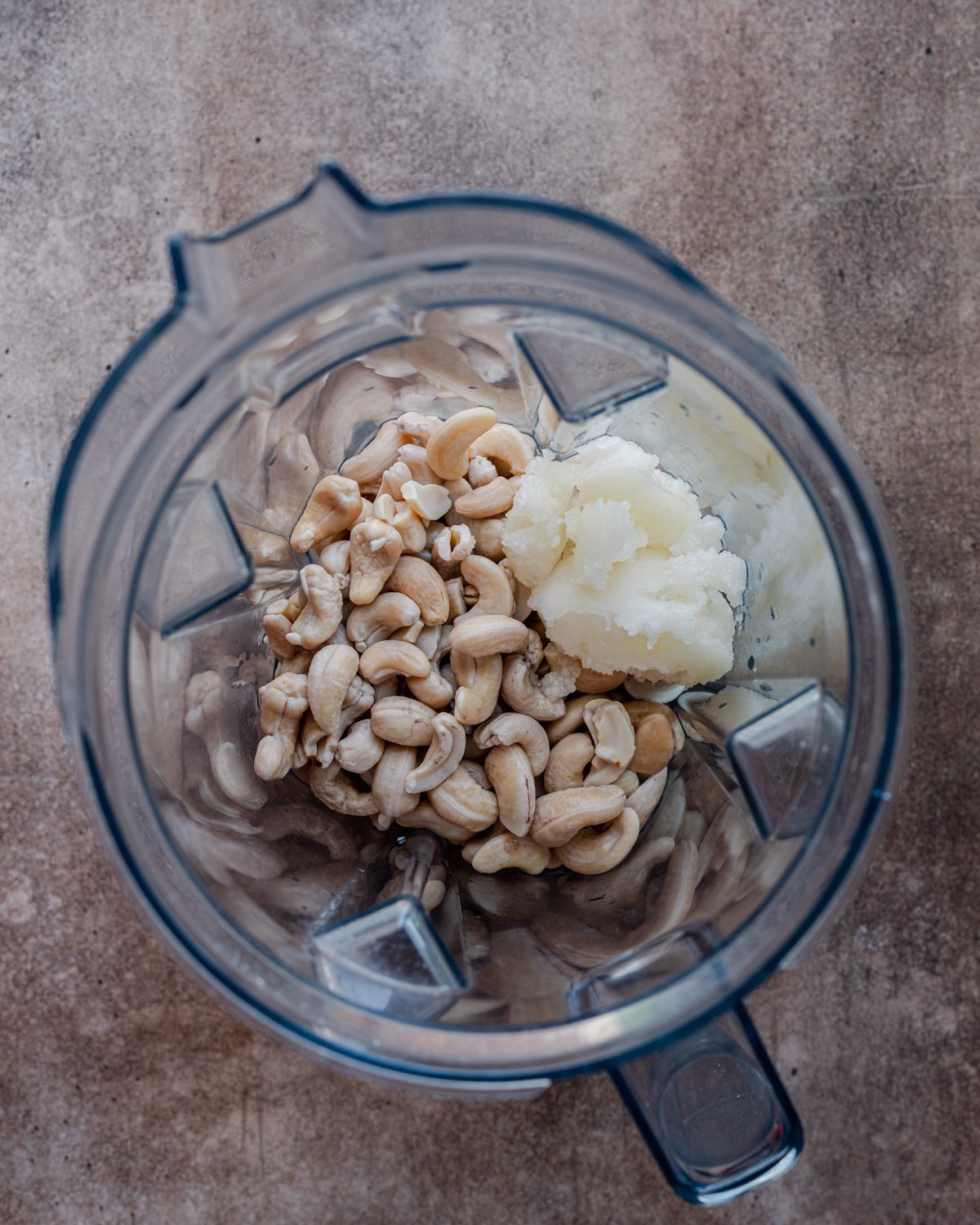
Add the nutritional yeast, garlic powder, onion powder, and salt. Blend again until completely smooth.
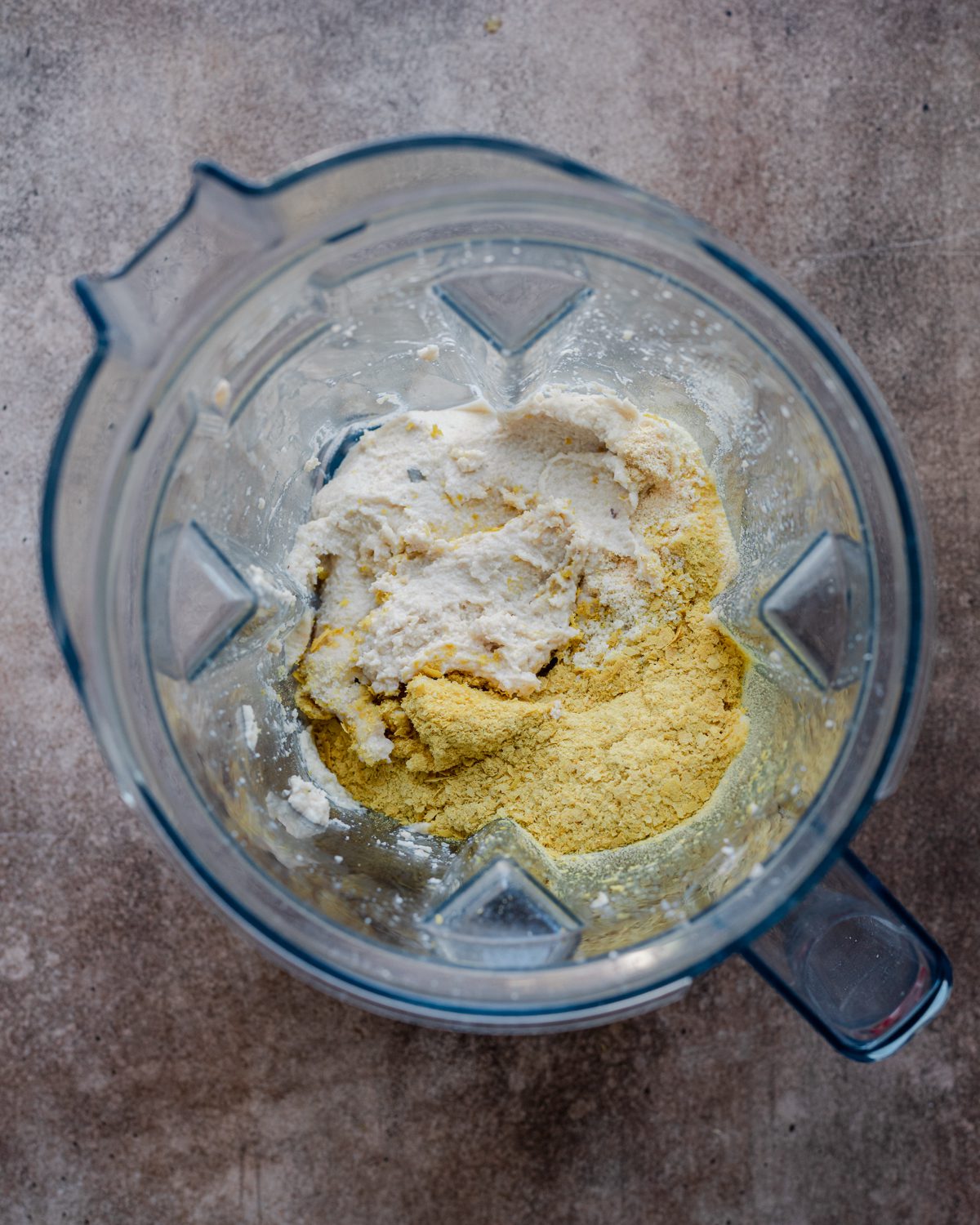
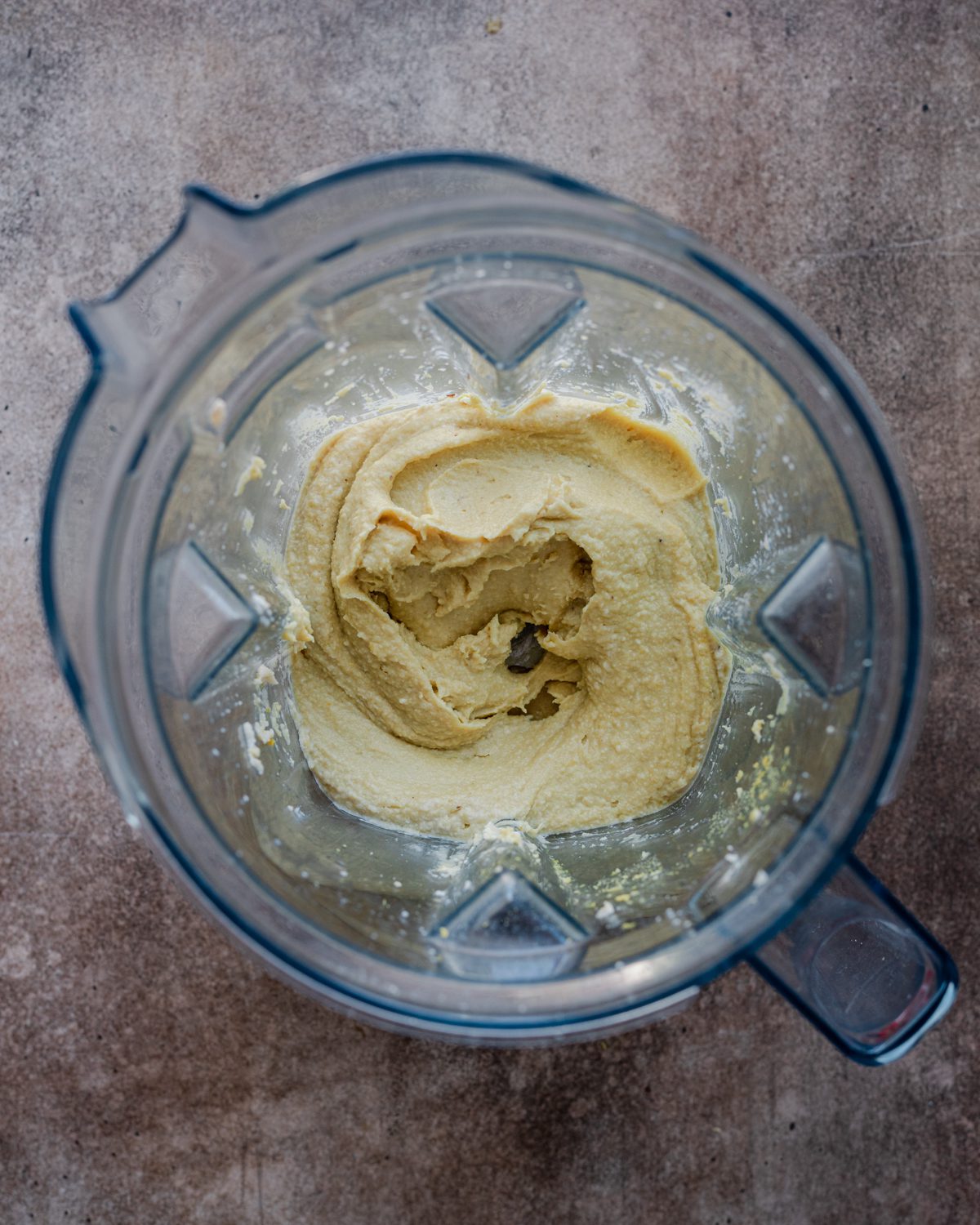
Transfer the cheese mixture to a clean mason jar (you can sterilize it if desired but it’s not necessary). Seal the jar and place in a warm spot to ferment for at least 16 hours, or up to 48 hours. (see “Tips” section for fermentation tips).
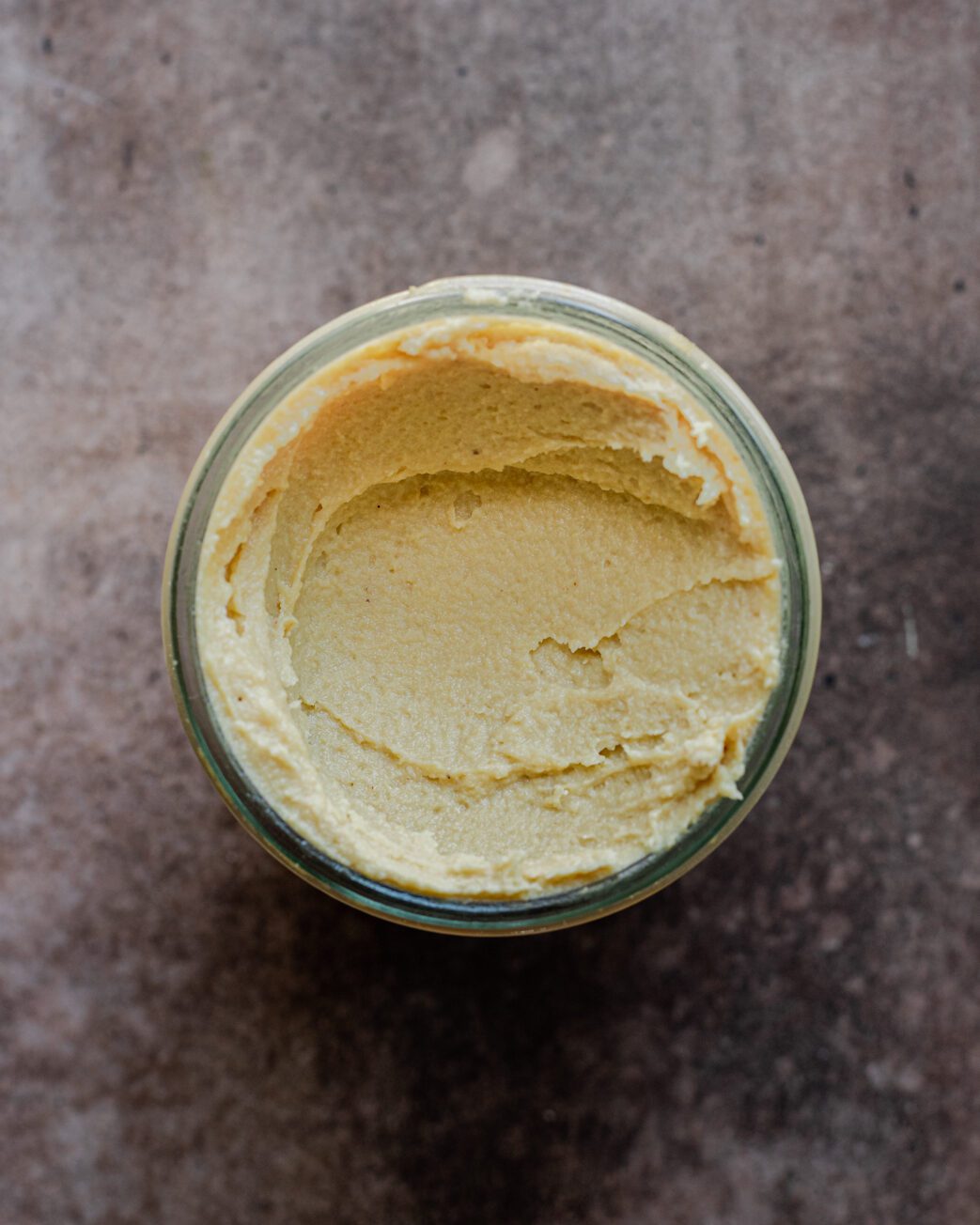
Stir the fermented cheese and transfer to the fridge for at least 4 hours to set.
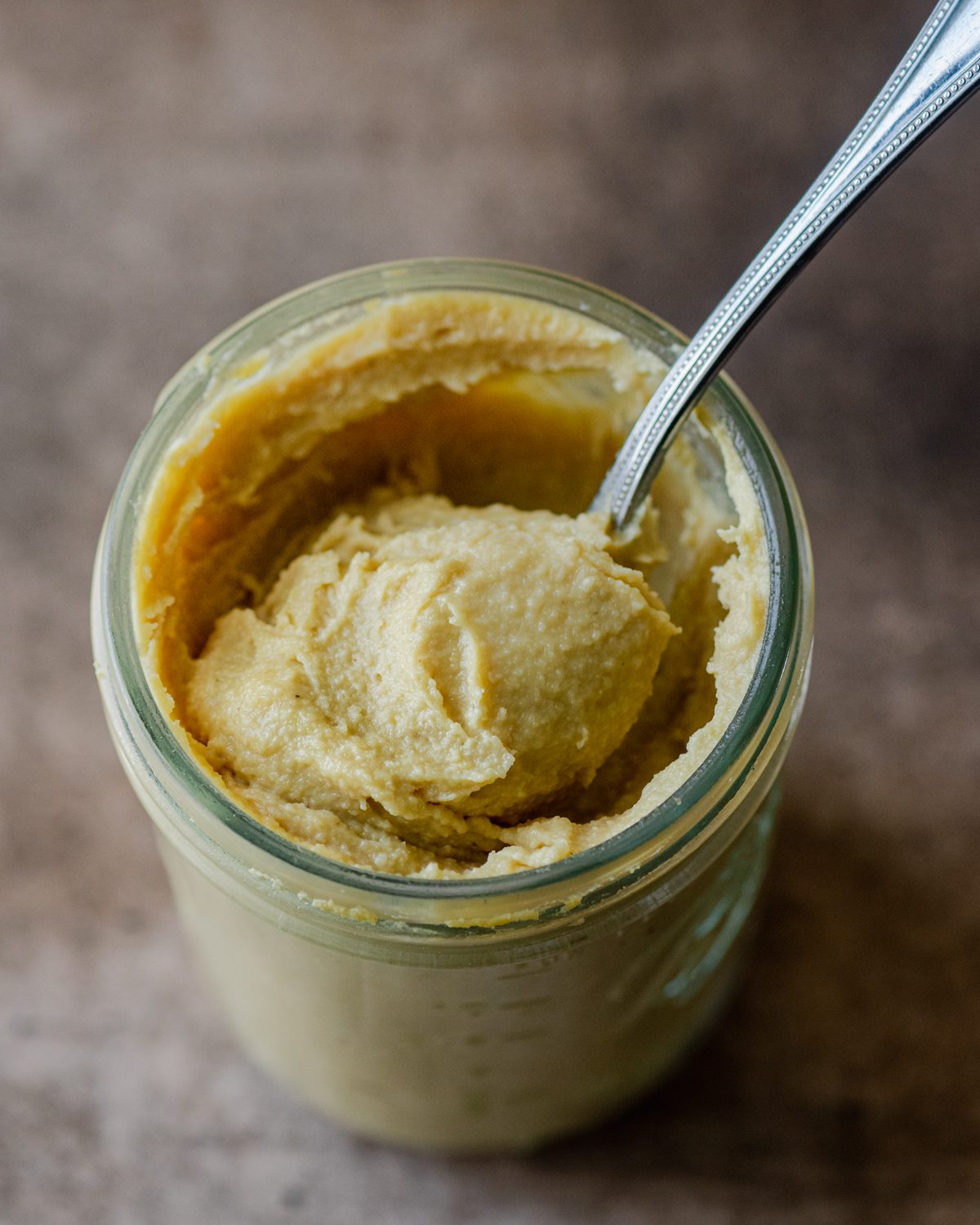
Once the cheese has solidified, scoop out half of it onto a sheet of parchment paper. Use a spoon to push it into a log-like shape.
Roll up the parchment paper and your hands to mold and shape the cheese into a log shape. Repeat with the other half of the cheese. Refrigerate the cheese logs for 2 hours, or more, to set.
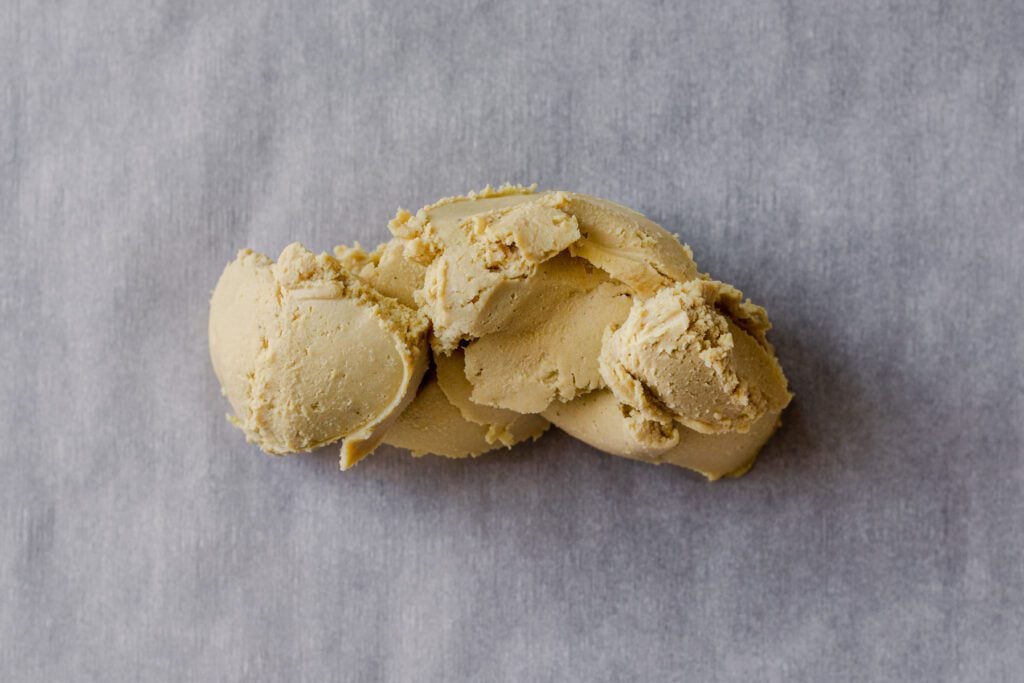
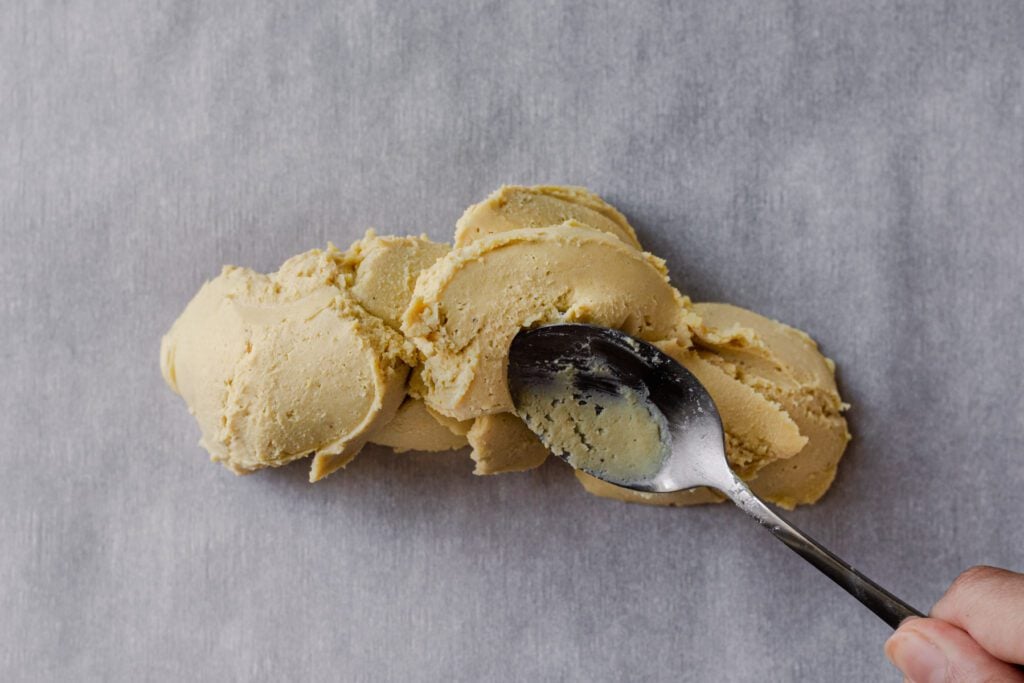
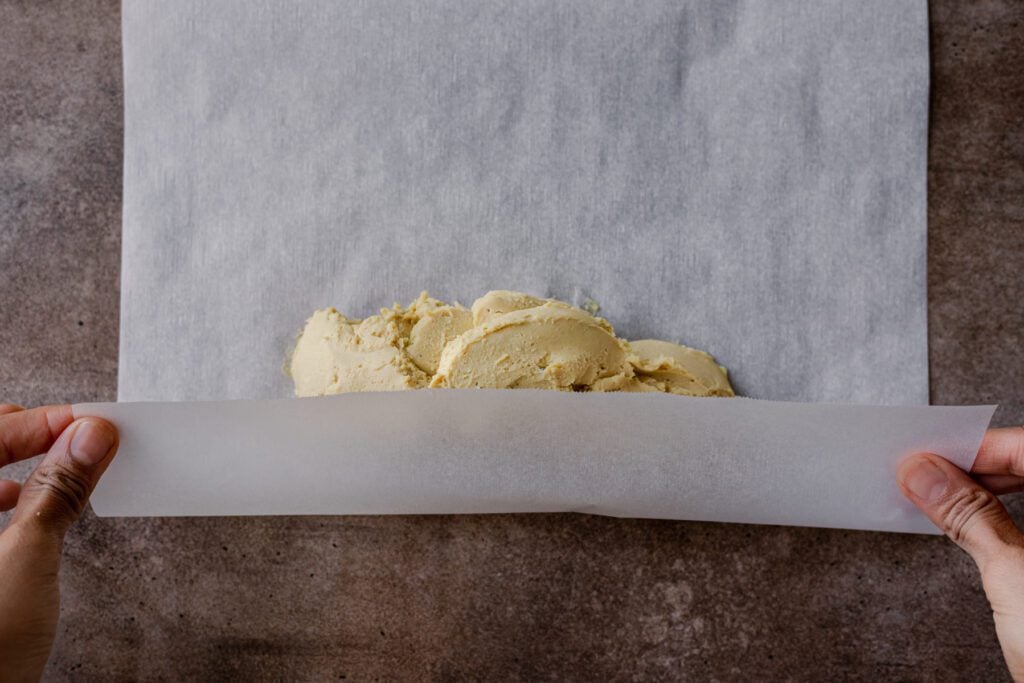
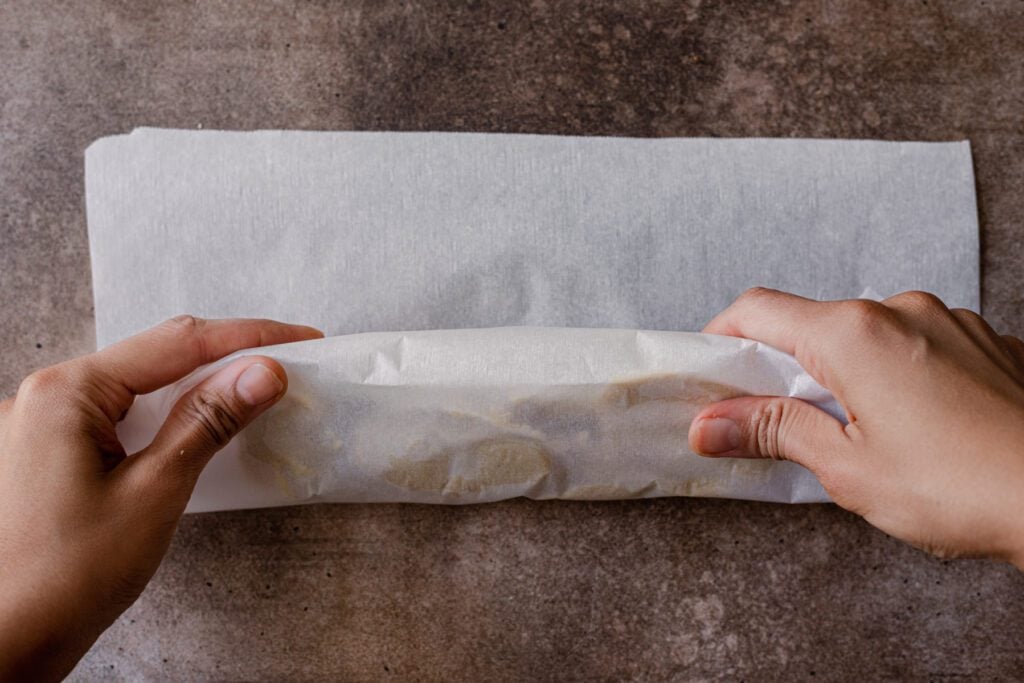
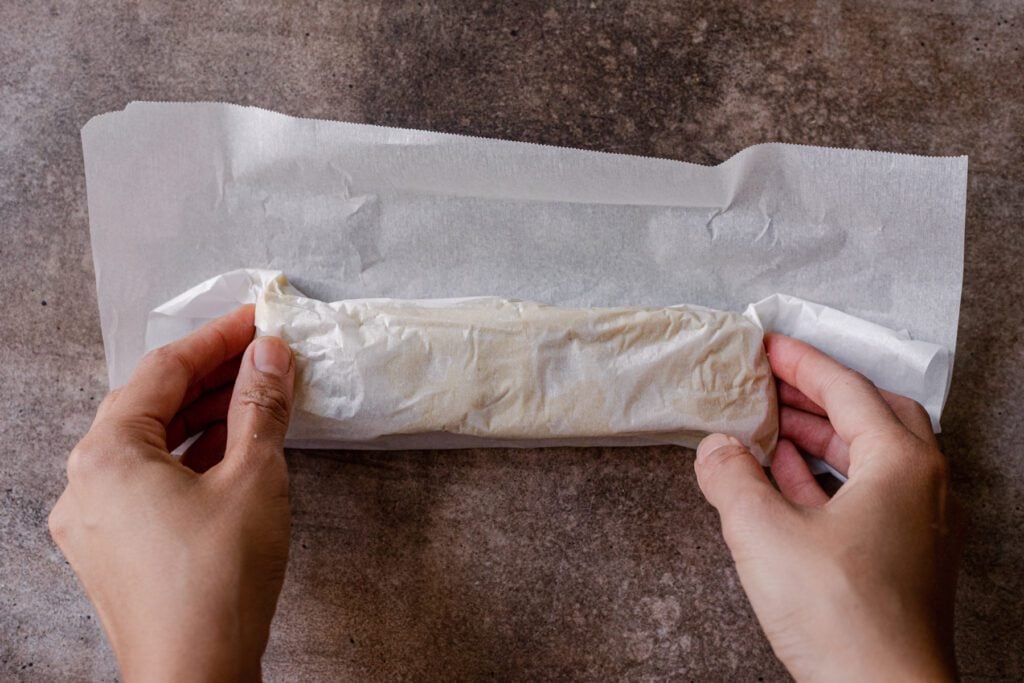
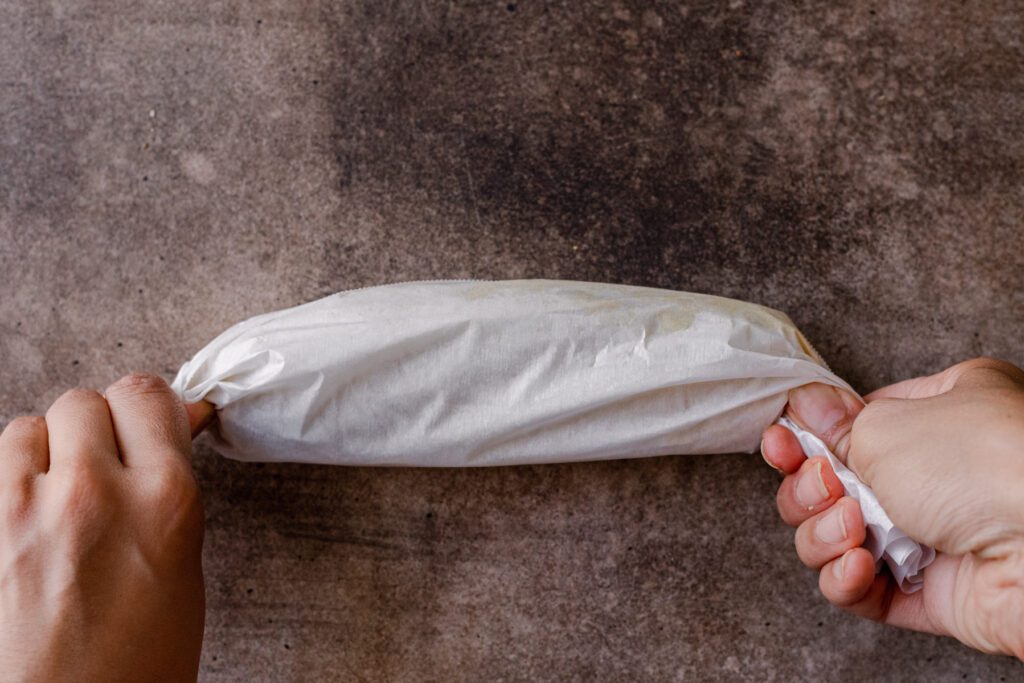
Once the cheese log is set, slice and spread as desired.
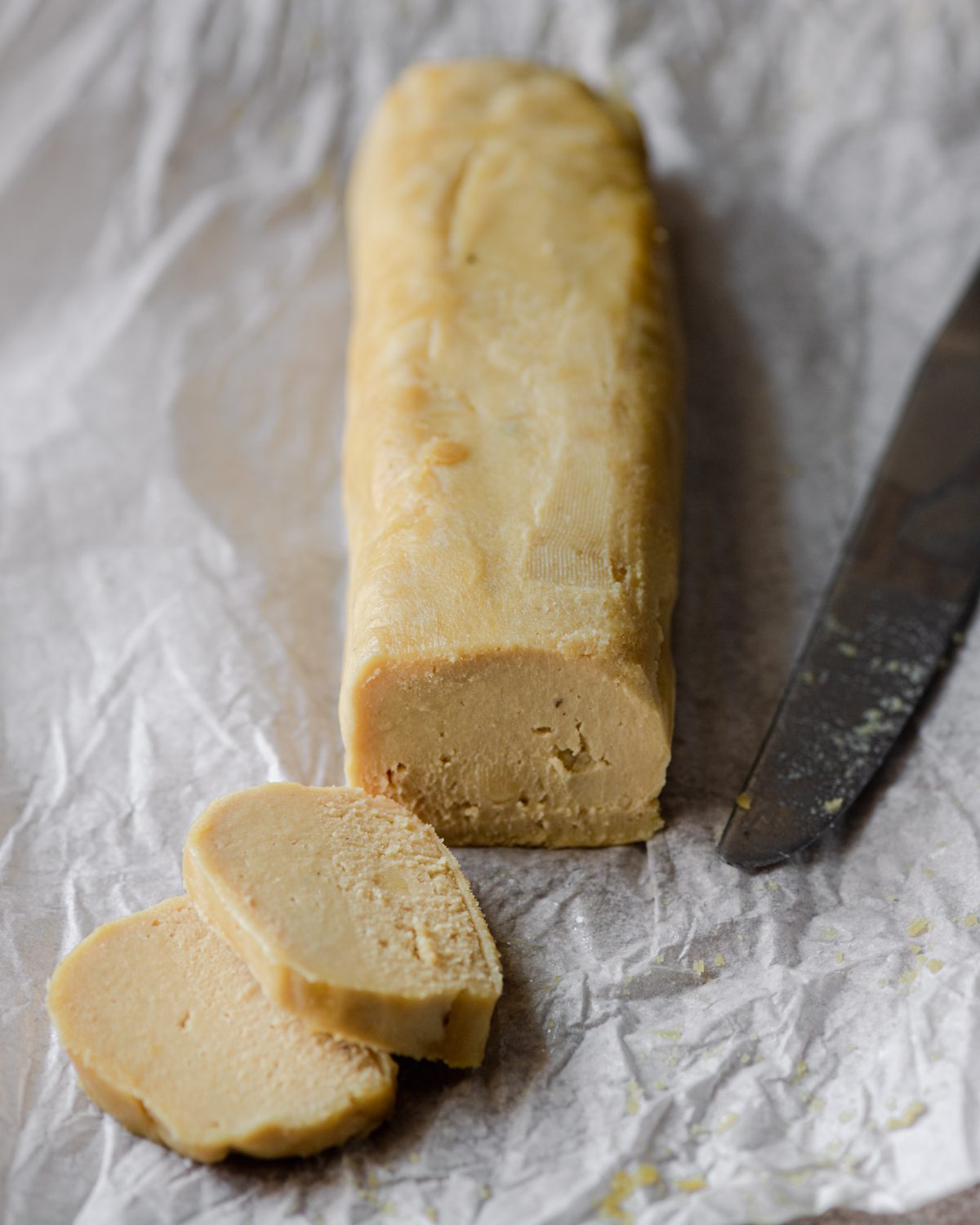
Tips for making this cheese
How to soften raw cashews.
I highly recommend soaking your cashews in cool water overnight, or boiling them on the stove for 20 minutes. Since there’s very little liquid, a proper soak or boil is necessary to fully soften the cashews.
Use a clean glass jar.
Wash your jar and lid with soapy warm water and dry well before adding your cheese and fermenting.
Use a high-powered blender.
Along the same lines, you’ll get the best, smoothest results with a high-powered blender, as you want a powerful machine to fully pulverize the cashews. Since there’s not much liquid, you’ll need to scrape down the sides several times as you go, especially if you have a large-sized blender container like me (I have the 64-ounce Vitamix container; it’s considerably easier with a smaller blender container).
Shake the apple cider vinegar.
It’s important to include a bit of the “mother” bacteria from the vinegar to start the fermentation process. Shaking the apple cider vinegar before pouring it ensures that the mother bacteria is evenly distributed.
Let it come to room temperature
If your cheese log has been in the fridge for quite awhile, let it sit at room temperature for 5 minutes to soften up. This will make it much easier to spread.
Where and how long to ferment the cheese.
One of the most important parts in the process is letting the cheese ferment in a warm place.
If it’s summertime, this could be your kitchen counter or pantry. If you live in a warm but not crazy hot climate like I do (Southern California), you can also ferment the cheese outside. Just make sure to not expose the jar to direct sunlight. I typically wrap the jar in ad dish towel during the day and set it outside; in the evening, I transfer it to the oven with the light bulb on (the warmth from the light is sufficiently warm for fermentation).
If it’s wintertime, you can just leave it in the oven as mentioned above. If that’s not an option, you’ll need to leave it out on a counter or in the pantry for at least a few days.
The warmer the temperature, the less time you should ferment it. The countertop when it’s not summer will take more time than in the oven with the light on. If the temperatuer is quite warm, consider fermenting for just 16 to 24 hours to avoid over-fermenting.
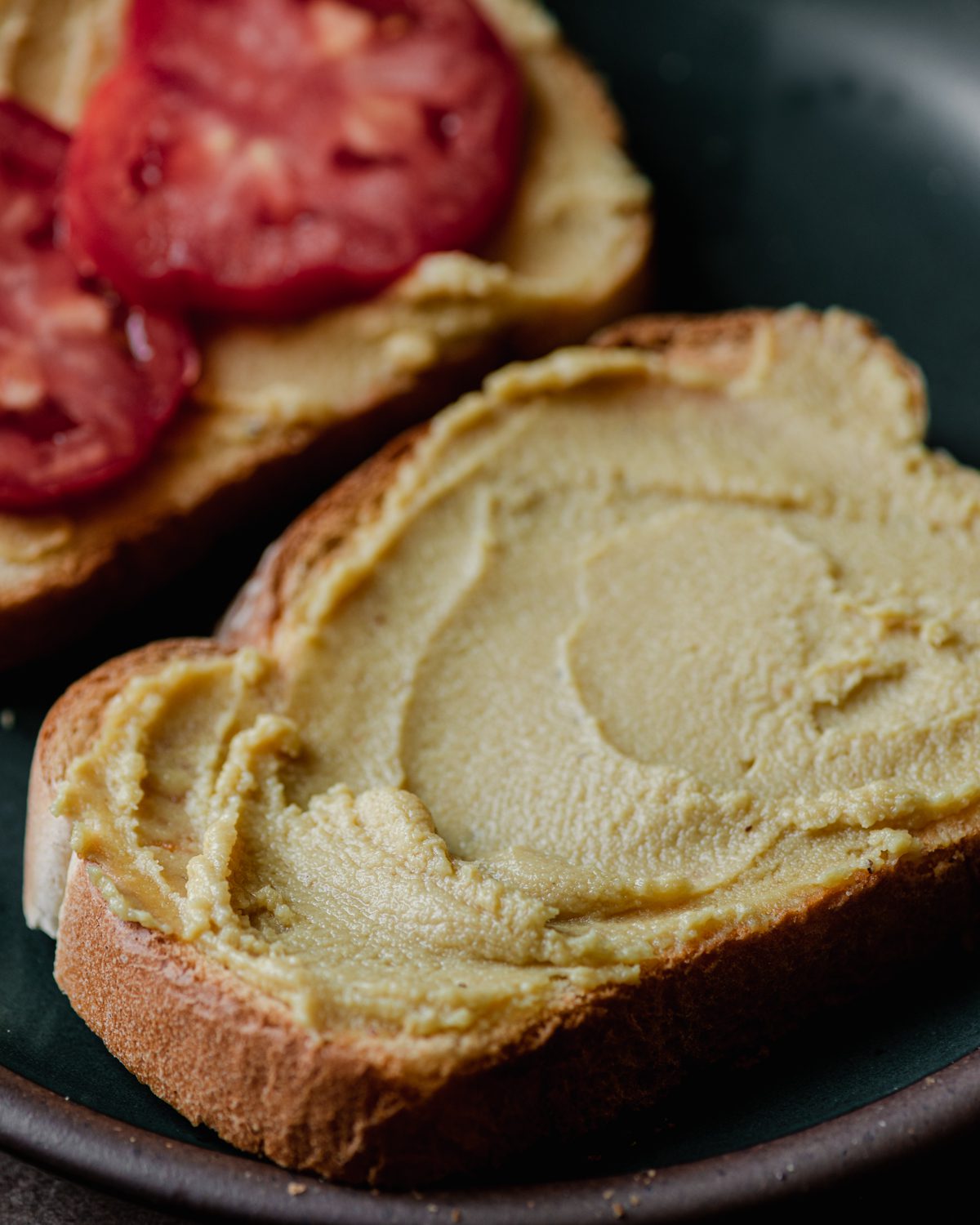
Frequently Asked Questions
The coconut oil is key for the texture of this cheese. As you might know, coconut oil has a high melting point compared to other oils (that’s why it’s solid at room temperature instead of liquid, like other oils). So when you refrigerate the cheese mixture, the coconut oil helps solidify it, leaving you with that sliceable texture.
If you are strictly oil-free, try my other oil-free cheese options (Vegan Queso and Nut-Free Cheese Sauce). If you are allergic to coconut products, you can try using olive oil, but I don’t know if you’ll get the same sliceable texture, as coconut oil is solid at room temperature.
NO! The combination of fresh garlic and oil at room temperature for more than a few hours can foster the growth of clostridium botulinum bacteria (aka botulism). It’s toxic and can cause bad severe food poisoning!
Roll it tightly in the parchment paper and store it in the fridge for at least 2 weeks. If the paper isn’t wrapped tightly, the edges dry out, so to avoid this, store the wrapped cheese in an airtight container.
Yes! Some flavor ideas are below. Just sprinkle them on after you’ve rolled the log and it’s hardened a bit. Use your hands to pat the mix-ins into the cheese. Then refrigerate again for 2 hours (or longer) to set.
– Sundried tomatoes + dried oregano
– Chopped dill + parsley
– Dried cranberries + crushed walnuts
– Pomegranate seeds + crushed pecans
How to use this cashew cheese
I have no doubt you’ll find countless uses for this delightful cheese, but here are a few to get you started:
- Spread it onto bread! My current favorite is a good crusty bread, a thick layer of fermented cheese, and heirloom tomatoes sprinkled with sea salt and pepper.
- Add some to a bowl as a dip for crudités or spread for crackers.
- Serve as part of a vegan charcuterie or cheese board with crackers, olives, and fruit.
- Use as a sandwich spread instead of mayo.
- Spread onto a pita round or flatbread and add your favorite toppings and bake in the oven for an easy pizza!
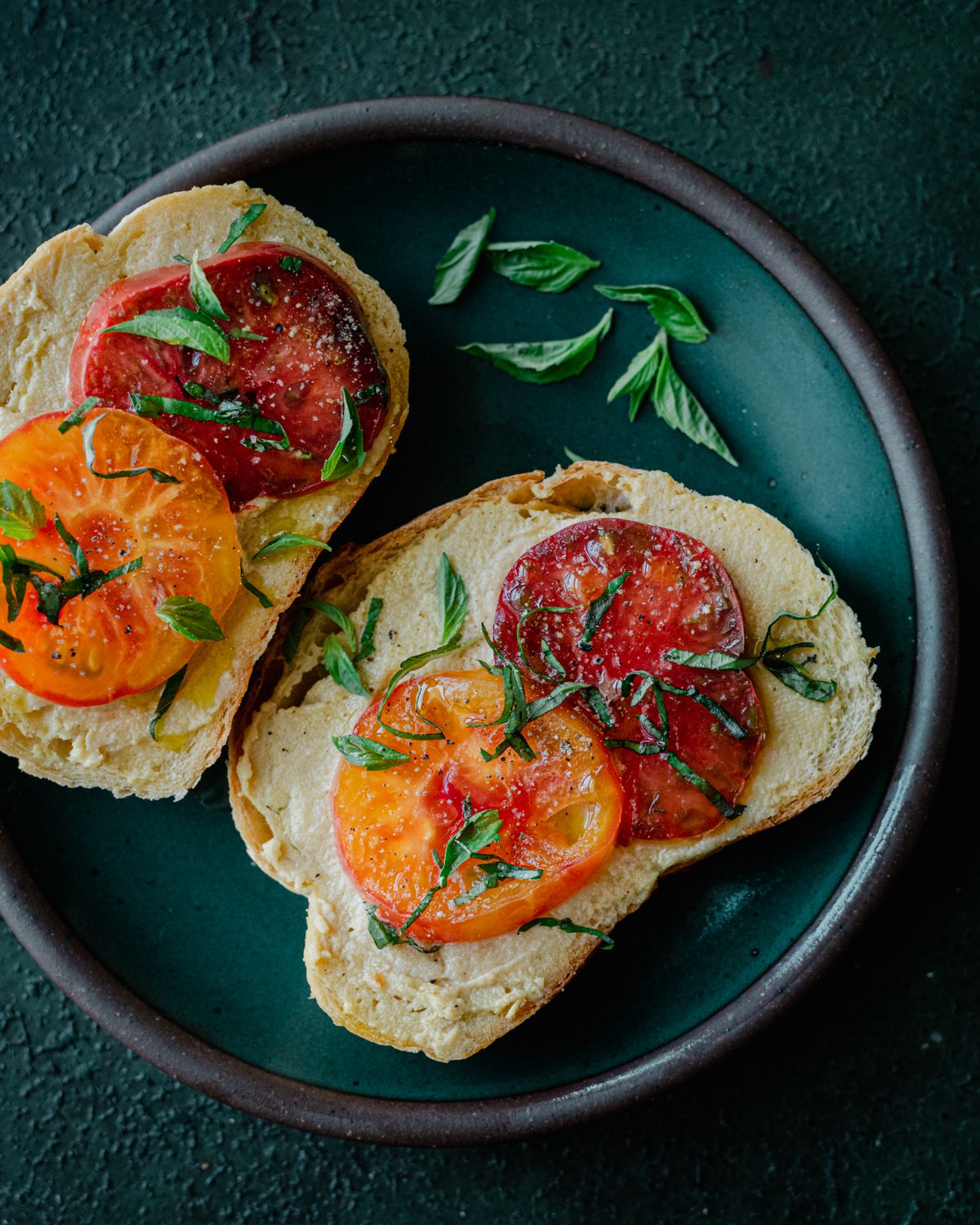
If you love this fermented cashew cheese, please leave a rating and review with your feedback and tag me on Instagram with your remakes :)
Fermented Cashew Cheese
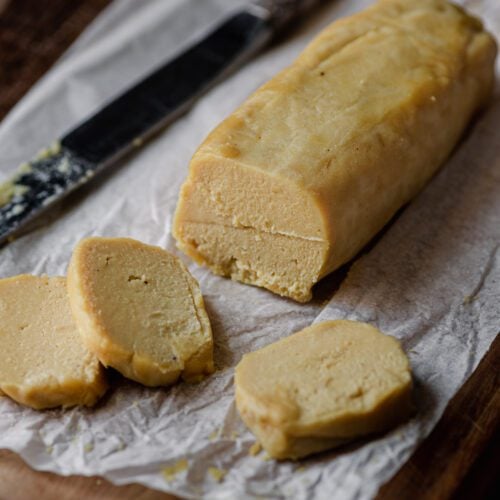
Ingredients
- 1 1/2 cups (200g) raw cashews, soaked in water overnight or for 8 hours or boiled in water on the stovetop for 15 minutes
- 2 tablespoons apple cider vinegar with the “mother”, shake the bottle to evenly distribute
- 1 tablespoon freshly squeezed lemon juice
- 3 tablespoons water
- 1/3 cup 67g refined coconut oil
- 1/2 cup ~25-30g nutritional yeast
- 3/4 teaspoon garlic powder (do NOT use fresh garlic!)*
- 3/4 teaspoon onion powder
- 1 1/4 teaspoons sea salt, more as needed
Instructions
- Drain the soaked cashews and rinse. Wash your glass jar and lid with warm soapy water and dry well.
- Add the cashews to a high-powered blender, along with the vinegar, lemon juice, water, and oil. Blend on medium or high speed, scraping down the sides as you go, until relatively smooth and creamy. Add the nutritional yeast, garlic powder, onion powder, and salt, and blend again until well incorporated and completely smooth. If you have a large blender container, like a 64 ounce jar, this will take several minutes, as you will need to scrape down several times, as there is very little liquid.
- Pour the mixture into a glass jar with an airtight lid. Seal and let the jar ferment in a warm place, for a minimum of 16 hours, or up to 48 hours.**If it’s summer, your kitchen counter works great. You can also place it in the oven with just the lightbulb on (be sure to not preheat your oven during this time and don't place it right next to the light, as it might get a little too warm). You can also ferment it outside if you live in a warm but temperate climate (no direct exposure to sun; loosely wrap the jars in a dish towel).
- Once the cheese has fermented, give it a stir and then refrigerate for at least 4 hours to firm up.
- Once the cheese has solidified, spoon half of it onto a sheet of parchment paper. Use a spoon to push it into a log-like shape. Roll up the parchment paper and use your hands and the parchment paper itself to mold and shape the cheese into a log shape. Repeat with the other half of the cheese in a second log. Refrigerate the cheese logs for 2 hours, or more, to set. Store leftovers wrapped in parchment paper in the refrigerator for at least 2 weeks.
Notes




This is THE BEST vegan cheese I have ever made. I have fed this to non-vegans as “cheese” and they totally believed that it was real! The fermentation really adds to that cheesy tangy flavor and the recipe is super easy to whip together. 100% reccomend!
Hi Karley, we’re thrilled to hear you enjoyed this recipe! Next time, would you mind leaving a rating alongside your review? Star ratings are big help to readers who are thinking of making the recipe. Thanks!
Very good
Hi Vikki, we’re thrilled to hear you enjoyed this recipe! Next time, would you mind leaving a rating alongside your review? Star ratings are big help to readers who are thinking of making the recipe. Thanks!
Hi! How much water is needed?
Thanks for a great recipe 😋
Hi there Noa, in the recipe it states you need 3 tablespoons of water :)
This was a really fun weekend recipe and it tastes SO good! Perfect those cheese and cracker cravings.
Awesome, Jackalyn. Thanks for your comment and for taking the time to review!
I only have unrefined coconut oil. Will that work ok?
Yes that should be fine!
What if I didn’t use coconut oil? I’m afraid. Sigh. I’m pretty sure I messed this recipe up.
I didn’t use oil. I used fresh garlic.
I’m on Day 3 of letting it ferment outside. Will it even be good as in will it be edible?
What a mess I’ve made.
Hi Kelly, unfortunately fermentation is a science and you can’t just omit and add ingredients like a regular cooking recipe. Oil is necessary to make this cheese sliceable and give it its texture. And fresh garlic can go rancid in oil at room temperature, so we definitely do not recommend using fresh garlic in this recipe. If you want an oil free recipe, you should try our queso sauce recipe!
Hi Nisha, I used to be a cheese lover, pre plant based eater.
And I still love that savoury taste, and make alternatives, but I thought this cheese log looked great, as opposed to the creany cheese blends I make. But as a (Whole Food plant Based )WFPB vegan, I avoid oils as Isolates, and their high calorie and fat content. Any chance, do you know whether this receipe could work without the oil, or can you suggest a WFPB substitute? Thankyou. PS Love your videos too.
Hi Linda, unfortunately you need to include the oil in this recipe to get it to slice.
Here are a couple of my oil-free vegan cheese recipes:
Nut Free Vegan Cheese Sauce
Vegan Queso
Hope this helped!
Linda, maybe you can solidify using agar agar powder? I use oil very sparingly too, so I can’t make this recipe.
Could it be fermented longer to make a harder tangier cheese?
Would you recommend using a fermenting lid?
Hi Giselle, feel free to use one but it is not necessary for this recipe! All you need is a jar with an airtight lid :)
I’m allergic to coconut. :-( Is there another oil that I could use in this recipe?
Hi Brandi, Olive oil can work, as it’s not too strongly flavored, but the reason we use coconut oil is because it has a high melting point and stays solid at room temperature, which is what helps solidify the cheese. So we aren’t 100% sure that using another oil that’s liquid at room temperature will give the same consistency. It’ll still be tasty for sure, but not sure if it will have the same consistency and texture that firms up. Hope that helped!
Hi.. Can I use other oils such as avocado oil or olive oil to substitute the coconut oil?Thanks
Hi Esther, Olive oil can work, as it’s not too strongly flavored, but the reason we use coconut oil is because it has a high melting point and stays solid at room temperature, which is what helps solidify the cheese. So we aren’t 100% sure that using another oil that’s liquid at room temperature will give the same consistency. It’ll still be tasty for sure, but not sure if it will have the same consistency and texture that firms up. Hope that helped!
Hi Nisha,
Thank you so much for your site. I love your recipes. I had a question about his recipe, if I forgot and left the cheese out for 3 days to ferment, instead of 2, is it still safe to eat? Thanks
Hi there Sheila! Give it a smell – if it smells fine (tangy, cheesy, sharp), you should be fine! If it smells off “off,” then I would discard it.
Wow! I have all these ingredients in my house right now. This is going to be such a staple!
I hope you loved it, Emma!
This was super easy to make and it definitely hit the spot!
Love your channel and the recipes.
Thanks for the lovely feedback, Basia! Thank you for trying it!
Awesome Nisha
Thank you, Mehru!
Can you make this without oil? Maybe add flax seed for binding? Thanks!
Hi there! Unfortunately oil is necessary to help the cheese become sliceable.
Can’t wait to try this. I’m wondering if I could use the yogurt setting on my instant pot for the fermentation part. What do you think?
I love your videos and website!
Hi Alice, we aren’t entirely sure, though it seems like it could work. I believe the instant pot yogurt setting gets to 110°F which is definitely hotter than your kitchen counter during the summer. So that’s the reason we aren’t 100% sure. If you do decide to try it, you might want to check more quickly, like after 12 hours. Hope that helped!
This looks fantastic, I really want to try it! I have read before about safety concerns around leaving garlic + oil at room temperature for over a couple hours and how it could cause botulism to grow. Though I don’t know much about this topic and was wondering if you had any insight as to whether this is of any concern here since garlic and oil are not the only things being fermented? Thanks!
I don’t think there would be a risk of botulism because the garlic is not fresh, plus you have the bacteria from the live ACV.
God I miss cheese. This is sooooo good. Thank you 🙏 oh and hello from the Isle of Man 😊
Hi there Jessica, I believe you are referring to fresh garlic, as it shouldn’t be stored in room temperature oil. However the recipe uses garlic powder, which I believe is fine. Also we’ve made this cheese about a half dozen times and everything is A-okay on our end :)
Made this today – first thing this morning … and O My Goodness! If the unfermented tastes this amazing, what will the fermented version be like? I love this fresh, but am fermenting a large jar. Thank you again for this recipe!!!
NOTE: If you cannot have cashews, you can replace it with other seeds or nuts of your choosing… macadamia nuts – which are creamy – might be a good substitute.
Thanks for sharing, LeeAnnah! Glad you love the taste so far!
I am allergic to cashews, is there a replacement, white beans or???
Hi Bernie, since cashews are the main ingredient in this recipe, I’m afraid I don’t have a great answer. I don’t think white beans have the same texture or flavor. It’s possible you could try raw sunflower seeds, but I haven’t tried it myself.
You can use almost any nut or seed to replace cashews! It might change the flavor… what about macadamia nuts? They a creamy.